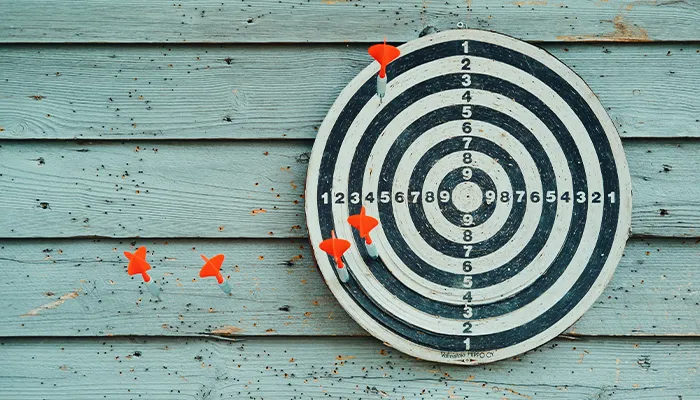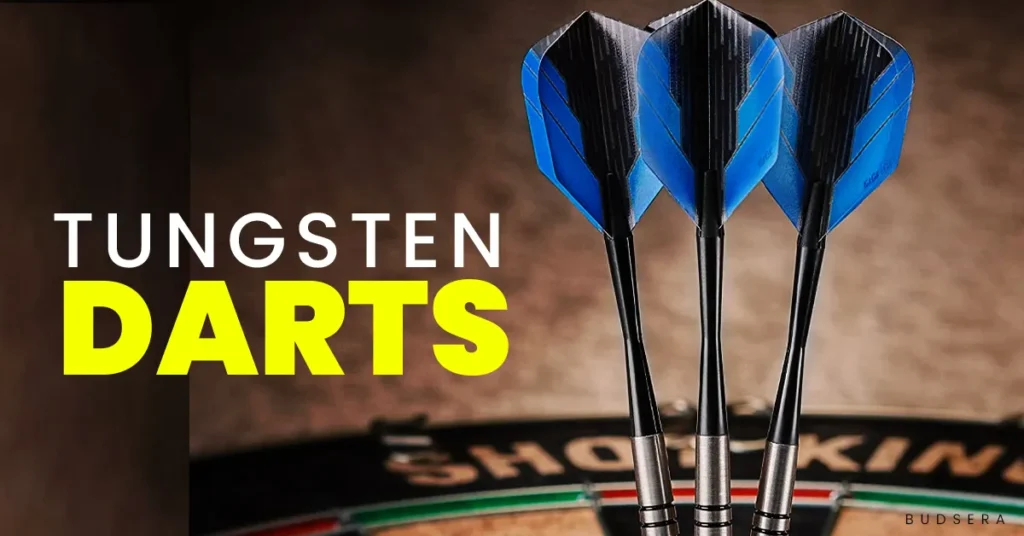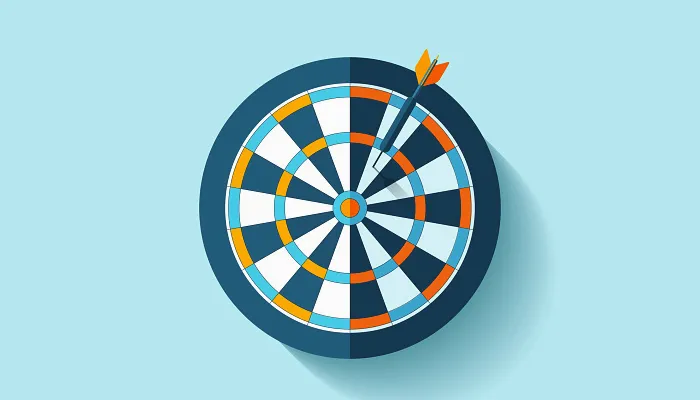So you’ve been playing darts for a while now and you’re getting pretty good. You’ve upgraded from those lightweight darts you started with and you’re ready to move up to something more professional. But with all the weights and sizes out there, how do you know what the pros prefer?
When you watch the big tournaments, the commentators don’t often discuss what weights the players are throwing. Lucky for you, we did some investigating into the preferences of the top players on the PDC tour. The results may surprise you.
Turns out, when it comes to darts the pros throw, bigger is not always better. Read on to find out which weights you should consider if you want to throw like the champions.
The Case for Heavy Darts
The pros prefer heavy darts for good reason. Heavier darts, typically around 22 to 24 grams, are more stable in flight and easier to release consistently.
When you’re just starting out, a lighter dart may seem more appealing. But as your skill improves, you’ll appreciate the added control and precision of a heavier barrel. The extra weight provides momentum to power through the air and hit your target.
Heavier darts also tend to group tighter, allowing you to achieve higher scores. The weight gives them a steadier trajectory and less susceptibility to air currents in the room.
For the casual player, a few grams may not seem significant, but for the seasoned pro, it can make a world of difference.
Some top players like Michael van Gerwen and Gary Anderson are known for using 24-gram darts. While personal preference and throwing style ultimately determine what works for you, following the lead of the pros is a good way to improve your game.
Once you get used to releasing a heavier dart, you’ll find that lighter darts just don’t provide the same feel and accuracy. Your darts become an extension of your throw, and the added consistency and control of a pro-weight dart could be just what you need to become a bullseye master.

What Weight Darts the Pros Prefer
When it comes to darts, the pros prefer heavier weights for maximum control and precision.
The most common weights the top players use are 24 to 26 grams. At these weights, the darts feel substantial in your hand but are still light enough for smooth release and follow-through. For power throwers, a heavier 27 to 30-gram dart is ideal.
Heavier darts require a firmer grip and stroke to get the best performance. Start with a mid-range weight of around 22 grams, then go up or down from there depending on how it feels. The key is choosing a weight you can throw consistently and accurately.
Some pros like Phil Taylor and Michael van Gerwen use customized darts with specialty grips or barrels for ideal balance. If you want to emulate the pros, look for a high-quality, tungsten dart that allows for interchangeable shafts and flights so you can create a custom setup.
When testing different weights, make sure to throw multiple darts of the same weight to get a real sense of how it impacts your release, follow-through, and precision.
The pros make it look easy, but finding the right darts for your throw takes practice. With time and consistency, you’ll zero in on a weight that gives you pinpoint control just like the big boys.
What the Stats Say About Dart Weights
The pros know their darts and have tested many weights to find their perfect match. While personal preference plays a role, looking at the stats reveals some insights into the weights the top players prefer.
The Heavier End of the Scale
Many of the top players opt for heavier darts, in the 22 to 24 gram range. The additional weight provides more momentum, allowing for a smooth release and consistent throw.
The extra heft also helps the darts penetrate the board more deeply, sticking more solidly. Players like Michael van Gerwen, Gary Anderson, and Peter Wright are known for using darts on the heavier end of the spectrum.
The Mid-Range
Not all players go for the heaviest darts though. A mid-range weight, around 21 to 23 grams, offers a good balance of control and power for many players. Adopting a mid-range weight may be good for beginners too as it provides stability without sacrificing too much speed or precision. Players such as Phil Taylor and James Wade tend to use darts in this mid-range.
It’s Personal
While the stats show many pros favoring heavier darts, the most important factor is using a weight you feel comfortable with and that suits your throwing style. Don’t get too caught up in what the top players use.
Focus instead on how different weights feel for you and your accuracy and consistency. With practice, you’ll determine the weight range that unleashes your full potential, whether it’s on the heavier or lighter end of the spectrum. The key is finding darts that feel balanced and natural in your hand.

Heavier Isn’t Always Better – Finding the Right Balance
While lighter darts may seem easier to throw accurately, the pros know that heavier darts provide more momentum and stability. However, heavier isn’t always better when it comes to darts. Finding the right balance is key.
Too Light vs. Too Heavy
Darts that are too light, around 16-18 grams, may be easy to release but difficult to control and keep on target. Darts on the heavier end of the spectrum, 24 grams or more, require a smooth release and solid follow through to land accurately.
For most players, a weight in the middle, around 22-23 grams, provides enough heft for power and precision without sacrificing control.
The pros test darts of varying weights to determine which they can throw most consistently and accurately.
Reigning PDC world champion Gerwyn Price prefers heavier 24 gram darts, while 16-time world champion Phil Taylor won most of his titles throwing 22-23 gram darts.
In the end, the right weight for you comes down to personal preference and throwing style. When testing different weights, focus on how the darts feel in your hand, how smoothly they release, and how well they group in the target.
The weight that gives you the most confidence and tightest groupings is the one that will make you a better player.
While the general guidance is to start with a mid-range weight, don’t be afraid to experiment. You may find, like many pros, that moving up or down a gram or two makes a world of difference in your game. The key is finding the weight that is just right for you.

Tungsten Makes a Difference
Tungsten is a game changer for darts. Compared to the brass darts of old, tungsten darts offer significant advantages for players at all levels.
Tungsten is an extremely dense metal, so tungsten darts can be made smaller in size but still reach the regulation weight of 22 to 50 grams.
The smaller size and aerodynamic shape means tungsten darts fly faster and straighter towards your target. They are also easier to grip and release consistently for improved accuracy.
The high density of tungsten allows for tighter grouping of the darts within the board. When darts land close together, it increases your chances of achieving high scores on each throw.
The energy behind tungsten darts also means they will penetrate the sisal fibers of the dartboard more deeply, reducing bounce-outs and improving scoring.
Nearly all professionals now use tungsten darts for these performance benefits. As an amateur player, tungsten darts may take some adjustment to get used to but can quickly improve your game.
When choosing tungsten darts, consider the weight, barrel shape and grip type that you find most comfortable and consistent. With practice, tungsten darts will make you a better player and bring you closer to the level of the pros.

Customizing Weight for Your Game
The weight of your darts affects how they fly and stick in the board. Lighter darts require less force to throw, so they may suit players with a smoother release or those building up arm speed. Heavier darts pack more punch, ideal for players with a quicker, snappier throw.
Find Your Sweet Spot
Experiment with different weights to find what suits your throw best. Most pros use darts in the 22 to 26-gram range, but don’t feel locked into that. Try a variety of weights and see how they impact your accuracy and feel. Some things to consider:
- Lighter darts (18-22g) may float and waver in the air more but require less effort to throw. Better for slower, smoother releases.
- Medium darts (22-24g) balance speed and power for most players. A versatile, all-purpose choice.
- Heavier darts (24-28g) punch through the air with more force. Best for quick, snappy throws. Requires more practice to master control and consistency.
The key is choosing a weight you can throw consistently while still achieving your desired speed and arc. Don’t make the common mistake of going too light or too heavy. Find your “sweet spot” for optimal performance.
With the wide range of weights and styles available, you can customize darts to suit your unique throw and skills. Tinker with different weights and talk to other players to get recommendations.
The pros have found what works for them through years of practice and competition. You can too, with time and the right equipment. Focus on control and consistency, the hallmarks of a great player, and you’ll be throwing like the pros in no time!

Are 28g darts too heavy?
Are 28 gram darts too heavy for you? Many pros prefer darts in the 22 to 26 gram range, but some top players like Phil Taylor and Michael van Gerwen actually throw heavier 28 gram darts. So how do you know if 28’s are right for your throw?
Heavier darts require more power and force to throw accurately. If you have a slower, smoother release, 28’s may feel too clunky and difficult to control. Lighter darts around 22 to 24 grams will glide through the air more easily with less effort.
However, if you have a quicker, snappier throw, the added weight of 28 gram darts can help propel them powerfully into your targets.
The most important factor is how the weight feels in your hand and affects your release and follow through. Some players find that despite a slower throw, they can generate more momentum and precision with slightly heavier darts.
The key is maintaining a consistent, balanced release and smooth follow through. If 28’s feel awkward or require you to adjust your throw significantly, they are probably too heavy for your natural motion and stroke.
In the end, the right weight for you comes down to personal preference and what inspires confidence in your game. Many pros suggest starting with a mid-range weight around 24 to 26 grams, then going lighter or heavier from there based on how your darts fly and group.
The pros may make 28 gram darts look easy, but lighter darts around 22 to 26 grams will suit most casual players and allow you to throw your best with consistency. Focus on a weight that complements your unique throw—not what the heavy hitters are using.
FAQs
Do you need heavy darts to improve your accuracy? Many beginners wonder about dart weights and how they affect their game. Here are some common questions answered:
Conclusion
So there you have it, a look into the weights the top darts players prefer. As with most sports, personal preference plays a huge role, but in general, you’ll want a heavier dart for tighter groupings and more control. Lighter darts can be easier to release smoothly and may suit players with wrist injuries or less arm strength.
The key is finding a weight that balances comfortably in your hand and releases effortlessly from your fingers. Don’t just go with what the pros use – experiment to determine what works for your unique throw and skill level. With the right darts in hand, you’ll be hitting 180s in no time!
Keep practicing and don’t be afraid to adjust until you find your sweet spot. The perfect darts are out there, you just have to throw them.


